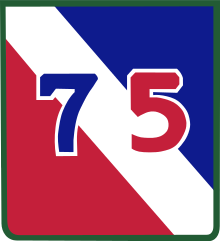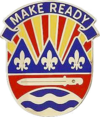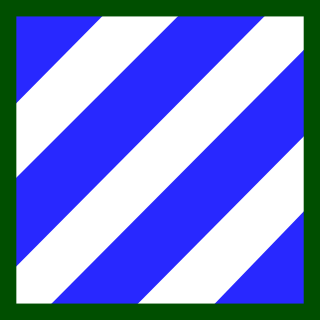
The 3rd Infantry Division (3ID) is a combined arms division of the United States Army based at Fort Stewart, Georgia. It is a subordinate unit of the XVIII Airborne Corps under U.S. Army Forces Command. Its current organization includes a division headquarters and headquarters battalion, two armored brigade combat teams, one infantry brigade combat team, one aviation brigade, a division artillery, a sustainment brigade and a combat sustainment support battalion along with a maneuver enhancement brigade. The division has a distinguished history, having seen active service in World War I, World War II, the Korean War, and the Global War on Terror. The Medal of Honor has been awarded to 61 members of the 3rd Infantry Division, making the division the most honored in the Army.
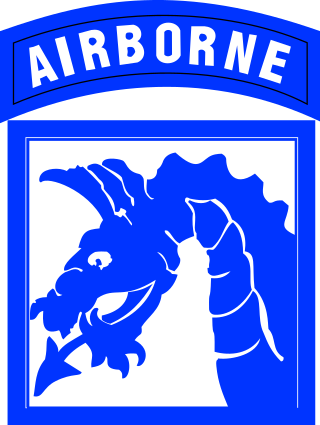
The XVIII Airborne Corps is a corps of the United States Army that has been in existence since 1942 and saw extensive service during World War II. The corps is designed for rapid deployment anywhere in the world and is referred to as "America's Contingency Corps." Its headquarters are at Fort Liberty, North Carolina.

First Army is the oldest and longest-established field army of the United States Army. It served as a theater army, having seen service in both World War I and World War II, and supplied the US army with soldiers and equipment during the Korean War and the Vietnam war under some of the most famous and distinguished officers of the U.S. Army. It now serves as a mobilization, readiness and training command.

The 78th Training Division (Operations) ("Lightning") is a unit of the United States Army which served in World War I and World War II as the 78th Infantry Division, and currently trains and evaluates units of the United States Army Reserve for deployment.

The 87th Infantry Division was a unit of the United States Army in World War I and World War II.

The 84th Training Command ("Railsplitters") is a formation of the United States Army. During World War I it was designated the 84th Division, American Expeditionary Forces; during World War II it was known as the 84th Infantry Division. From 1946 to 1952, the division was a part of the United States Army Reserve as the 84th Airborne Division. In 1959, the division was reorganized and redesignated once more as the 84th Division. The division was headquartered in Milwaukee in command of over 4,100 soldiers divided into eight brigades—including an ROTC brigade—spread throughout seven states.

The 95th Infantry Division was an infantry division of the United States Army. Today it exists as the 95th Training Division, a component of the United States Army Reserve headquartered at Fort Sill, Oklahoma.

The 80th Training Command is a formation of the United States Army Reserve.

The 102nd Infantry Division ("Ozark") was a unit of the United States Army in World War II. The unit is currently active as the 102nd Training Division (Maneuver Support).

The 103rd Infantry Division was a unit of the United States Army that served in the U.S. Seventh Army of the 6th Army Group during World War II.
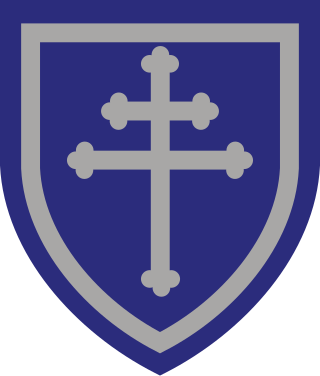
The 79th Infantry Division was an infantry formation of the United States Army Reserve in World Wars I and II.
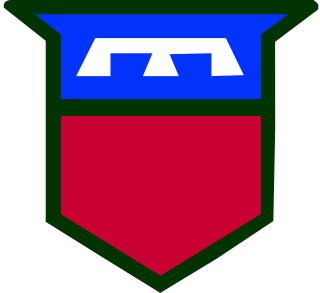
The 76th Infantry Division was a unit of the United States Army in World War I, World War II and the Cold War. The division was inactivated in 1996 and has been reconstituted as the 76th US Army Reserve Operational Response Command in 2013.

The 70th Infantry Division ("Trailblazers") was a unit of the United States Army in World War II, spearheading the Seventh United States Army's drive into Germany, south of Saarbrücken.

The 85th Infantry Division also known as "Custer Division" was an infantry division of the United States Army in World War I and World War II. It currently exists as the 85th Support Command.

The 13th Sustainment Command (Expeditionary)—the "Lucky 13th"—is a U.S. Army modular sustainment command which serves as a forward presence for expeditionary operations for a theater, or in support of a regional combatant commander. Expeditionary sustainment commands (ESC), such as the 13th, synchronize distribution of supplies and services within their operational areas and provides distribution oversight. Formed at Fort Cavazos, Texas when the 1st Logistics Command deployed to Vietnam, the organization then known as the 13th Support Brigade was initially responsible for the training of technical services units to assume combat service support missions in Southeast Asia.

The United States Army North (ARNORTH) is a formation of the United States Army. An Army Service Component Command (ASCC) subordinate to United States Northern Command (NORTHCOM), ARNORTH is the joint force land component of NORTHCOM. ARNORTH is responsible for homeland defense and defense support of civil authorities. ARNORTH is headquartered at Fort Sam Houston, Texas. Redesignated ARNORTH in 2004, it was first activated in early January 1943 as the United States Fifth Army, under the command of Lieutenant General Mark W. Clark.

The 108th Training Command (Initial Entry Training) is a United States Army Reserve unit headquartered in Charlotte, North Carolina. At its activation, the unit was designated as the 108th Airborne Division, but in 1952 was redesignated the 108th Infantry Division. In 1956, the division was again reorganized, this time to the designation as the 108th Division (Institutional Training). Under the U.S. Army Reserve Transformation of 2005, the 108th was reorganized to is current structure as the 108th Training Command (Initial Entry Training (IET)). The command is currently one of the largest in the Army Reserve, commanding and coordinating 9,000 soldiers.
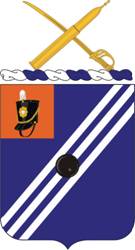
The 76th Field Artillery Regiment is a field artillery regiment of the United States Army. First formed as a cavalry regiment in 1916, the regiment was converted to field artillery in 1917, and served in Europe during World War I with the 3rd Division and as a separate battalion during World War II, as well as in peacetime at Fort Knox, KY, and Fort Devens, MA. Since 1959, the regiment has been a parent regiment under the Combat Arms Regimental System and the U.S. Army Regimental System, with regimental elements serving with the 3rd Infantry Division in Germany and Operation Iraqi Freedom, with the 7th Infantry Division in Korea, and in the Army Reserve. No regimental elements are currently active.

The United States Army Central, formerly the Third United States Army, commonly referred to as the Third Army and as ARCENT, is a military formation of the United States Army that saw service in World War I and World War II, in the 1991 Gulf War, and in the coalition occupation of Iraq. It is best known for its campaigns in World War II under the command of General George S. Patton.
